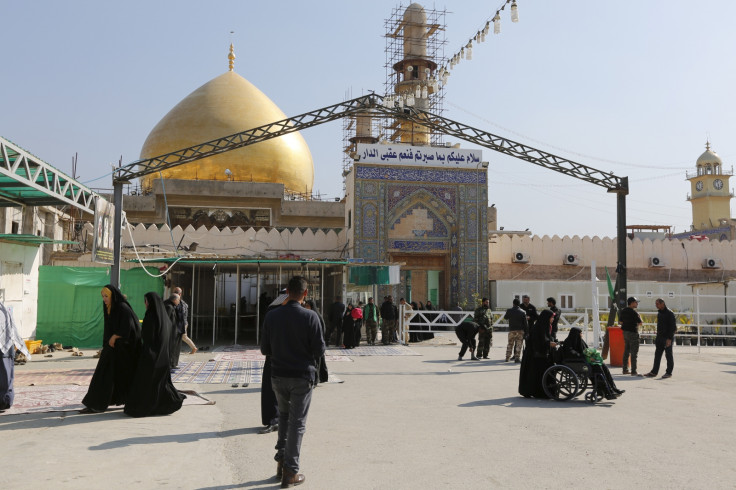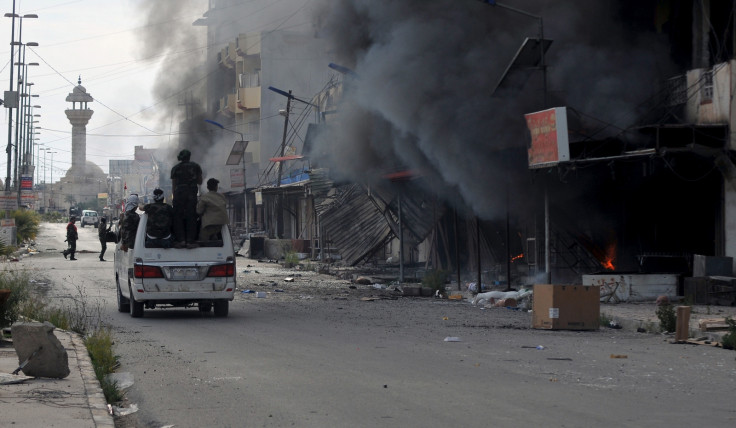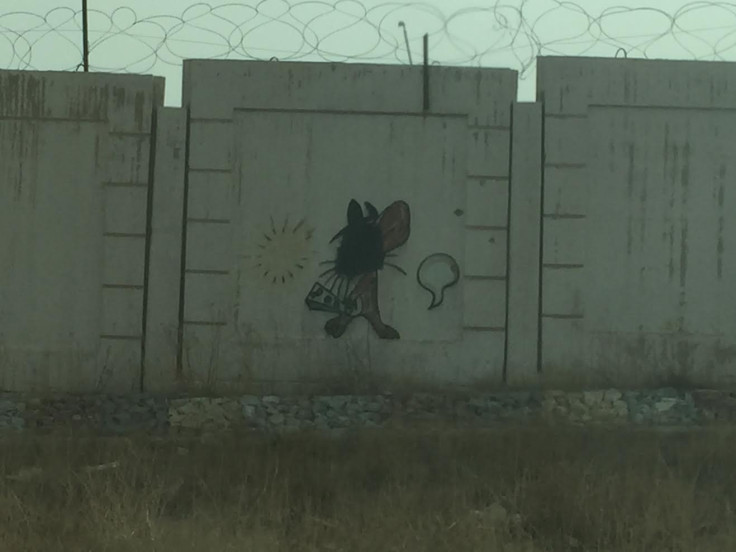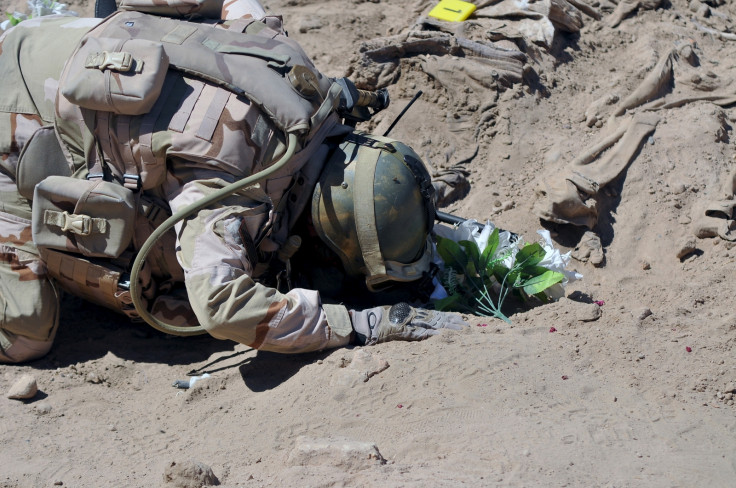Inside Samarra: Iraq's holy city that has withstood a decade-long Isis and al-Qaeda onslaught
The Shia stronghold held out against Isis despite relentless suicide bomb attacks.

As the sound of the evening adhan, or call to prayer, cuts through the silent fog hanging over the banks of the Tigris in the Iraqi city of Samarra, Jasim Mohammed, a pilgrim from Basra, arrives at the al-Askary Mosque.
The golden domed-building, which holds two of Shia Islam's holiest shrines, has been a flashpoint for some of the worst violence in Iraq's modern history. In 2006, al-Qaeda in Iraq, the forerunner to Islamic State (Isis), destroyed the mosque, sparking a bitter sectarian war.
"We are oppressed and we have lived hard times," Jasim says as he recalls the attack on the mosque, when four bombs detonated simultaneously. "These are our imams, the people we hold in highest esteem, and the terrorists came and attacked them."
A short, slight man, he wipes tears from eyes as he says he would give his life to protect Shia Islam's holy places. Jasim's words are not idle. Since 2014 and the creation of the Popular Mobilisation Forces (PMF), paramilitary groups formed to push back the Isis advance, the labourer has picked up a gun twice to fight against the militants in Saqlawiya, outside Fallujah, and Jurf al-Sakhar, south of Baghdad.

In the last 18 months, the front line in Iraq's war against Isis has moved 300 km north to Mosul but Samarra retains the feeling of a city under siege. In the faltering light of an early December evening its streets are noiseless as PMF troops move between the dozens of checkpoints in and out of the city. The walls of shops and houses on its main thoroughfares are adorned with the smiling faces of martyrs killed in the recent fighting and in the suicide bomb attacks that plague the city.
Five days earlier (28 November), five Isis gunmen wearing suicide vests infiltrated Samarra, crossing the Tigris in a boat and attacking a government building. They killed four members of the security forces in the fighting and subsequent suicide blasts, with three able to detonate their devices.
At its outermost checkpoint troops from the constellation of PMF brigades with their flags of Shia devotion, regular Iraqi soldiers and militarised police are shuttled back and forth from the front. Armoured personnel carriers, technical vehicles (pickups and US Humvees with affixed anti-aircraft guns) and troop transports carry the fighters in an array of different camouflages and uniforms. They are headed from Samarra either south towards Baghdad or back to the Isis lines in Mosul.

For months, however, Samarra marked one of the northern-most points to withstand the Isis advance and in June 2014 the militant group took control of a handful of buildings. Nearby, Fallujah, Ramadi and Tikrit all fell.
Imam Saif al-Daili says in the months before Isis was expunged there were mounting fears Samarra would be overrun by the militants. The Shia cleric, who leads prayers in the al-Asakry Mosque and fought Isis with the PMF in Tikrit and across Salahedin province, explains the destruction of Samarra's shrines was among the group's foremost ambitions.
"We captured people from Daesh," Daili says using the Arabic acronym for the group. "We asked them why they fought and they said their first mission was to destroy all the shrines. Their second mission was to kill all the Shia." The Imam says as the group threatened Baghdad, the militants declared they would destroy all Shia places of worship in Iraq.
We have to put an end to to sectarianism in Iraq, we are all Iraqi.
In Tirkrit, 75 km north, the wave of destruction that threatened Samarra has left an indelible mark on the home of former Iraqi leader Saddam Hussein. Liberated in April 2015, the scars remain. Rubble lies in the streets and the buildings are pockmarked with bullet holes. An innocuous government meteorological station shows the signs of some forgotten shootout. Office buildings lie slumped, smashed by coalition airstrikes, their floors concertinaed and listing to one side or another.
A beige wall lined with barbed wire on one street shows some of the last signs of Isis' morality police or 'Hisbah'. Children's drawings – an astronaut, a rabbit and a cartoon mouse – have all had their faces obscured with black paint. Isis considers the depiction of any person or animal a form of idolatry.

IBTimes UK reporter Callum Paton travelled to Iraq to report on its developing war against Islamic State and the challenges it faces as the militant group's defeat appears imminent.
He visited Iraq's southern Shia heartlands including the cities of Najaf, Karbala and Kufa. He also interviewed officials in the capital Baghdad and visited the cities of Samarra and Tikrit, previously on the front lines of the battle against Isis.
Other articles in the series chronicling the state of Iraq include:
Inside Samarra: Iraq's holy city that has withstood a decade-long Isis and al-Qaeda onslaught
Christian militia taking on Isis: 'They burned our churches, desecrated our monasteries'
Iraq braces for bloody insurgency after Isis jihadis are forced from their Mosul stronghold
Muslim leaders join international delegation to uncover harsh reality of Isis in Iraq
They used to be jailed for losing games - now Iraq's players want to bring football back home
Shia families told 'don't weep for our martyrs' as fathers and sons die in holy war against Isis
Adel Abu Ashou, a PMF fighter from the Ali al-Akbar brigade, participated in the battle to liberate Tikrit. He describes the battle up the Shishine Valley into Tikrit as hard-won, with a fierce fightback from Isis. He claims many of militants were not Iraqi, but from Saudi Arabia and the Gulf States. He adds the PMF was counterattacked relentlessly with deadly car bomb assaults.
"We faced many suicide bomb attacks," he says. "We had to use RPGs to repel the suicide bomb attacks and when they were no more than 150 meters away we would target them." He adds that when the missiles hit, the explosions were huge.
One of the areas recaptured by Ashou and his brigade was Camp Speicher, a former US air base, later an Iraqi air academy, which lies to the north of the city. Its name is now synonymous with the worst atrocities carried out by Isis, which has made ostentatious acts of violence its calling card throughout the world. The base lies littered with rubble, its chain-link fences ripped and dilapidated. The entrance to the facility is covered with bullet holes and a larger crater at the top of the building remains where a rocket propelled grenade slammed into its concrete facade.

Human Rights Watch reported between 560-770 Shia recruits from Speicher were systematically executed by Isis when it took control of Tikrit in June 2014. However, the Committee for Preserving the Memory of the Tikrit Massacre in Iraq has said at least 1,700 were slaughtered. It is calling for the UN to recognise the killings as an act of genocide.
At a former Baath party building by the Tigris, now covered in pro-PMF graffiti and infamous as the one of the backdrops for the massacre shown in Isis propaganda, pictures of those killed during the atrocity hang in remembrance. The river that runs by, deep brown in colour and where many of the recruits bodies were dumped, passes slow and silent under a bridge severed in two by an Isis car bomb attack.
The PMFs have been accused of forced disappearances and destruction of Sunni property in the areas surrounding Tirkrit, particularly as vengeance for the Speicher massacre, during the battle to retake the city.
However, for Jasim Mohammed revenge holds little appeal. "We have to put an end to to sectarianism in Iraq, we are all Iraqi," he says. "Of course there are some Sunnis in Mosul who are sympathetic to Daesh but most in Anbar and elsewhere are glad to see them gone."

- Callum Paton travelled to Iraq courtesy of the Ramadhan Foundation in the UK and the Shrine Al-Ataba Al-Husayniya in Iraq.
© Copyright IBTimes 2025. All rights reserved.






















